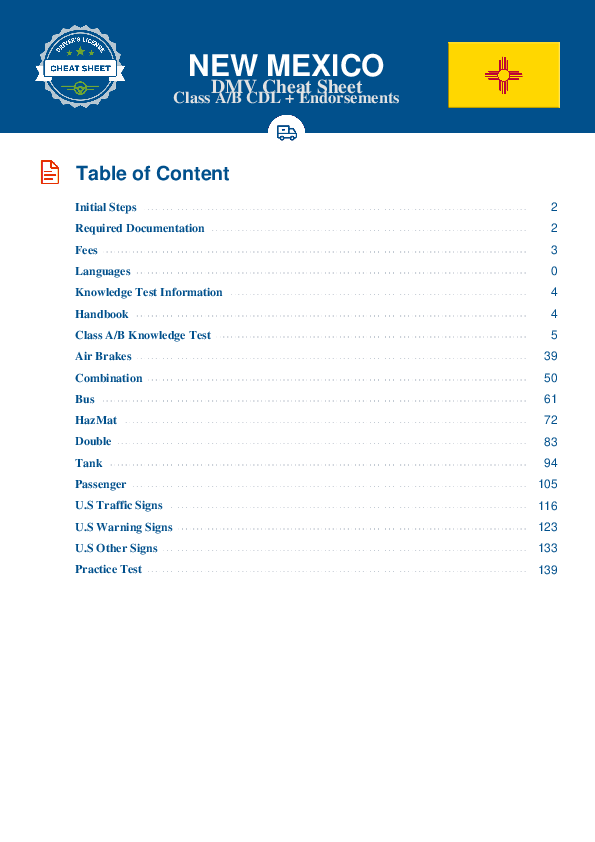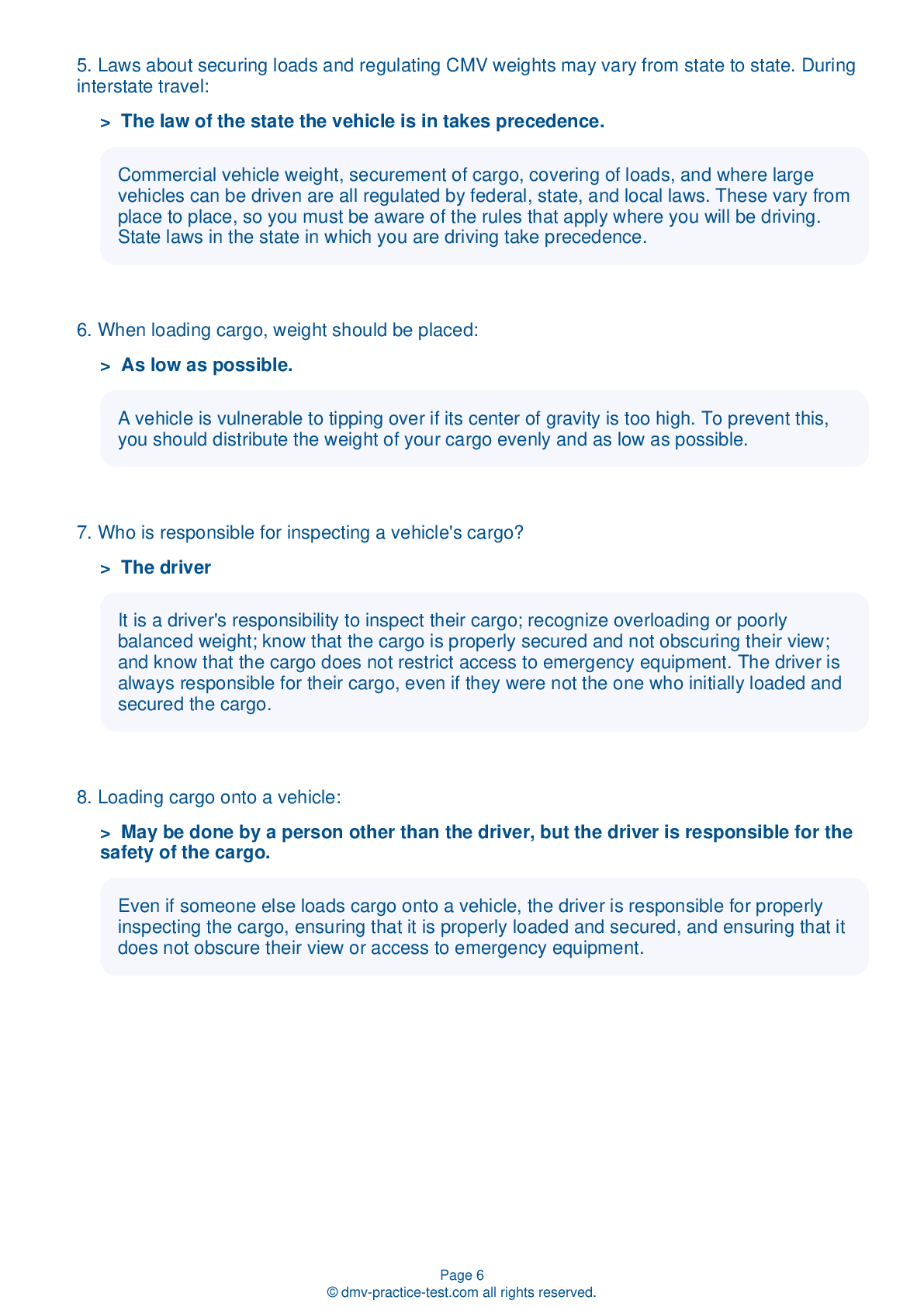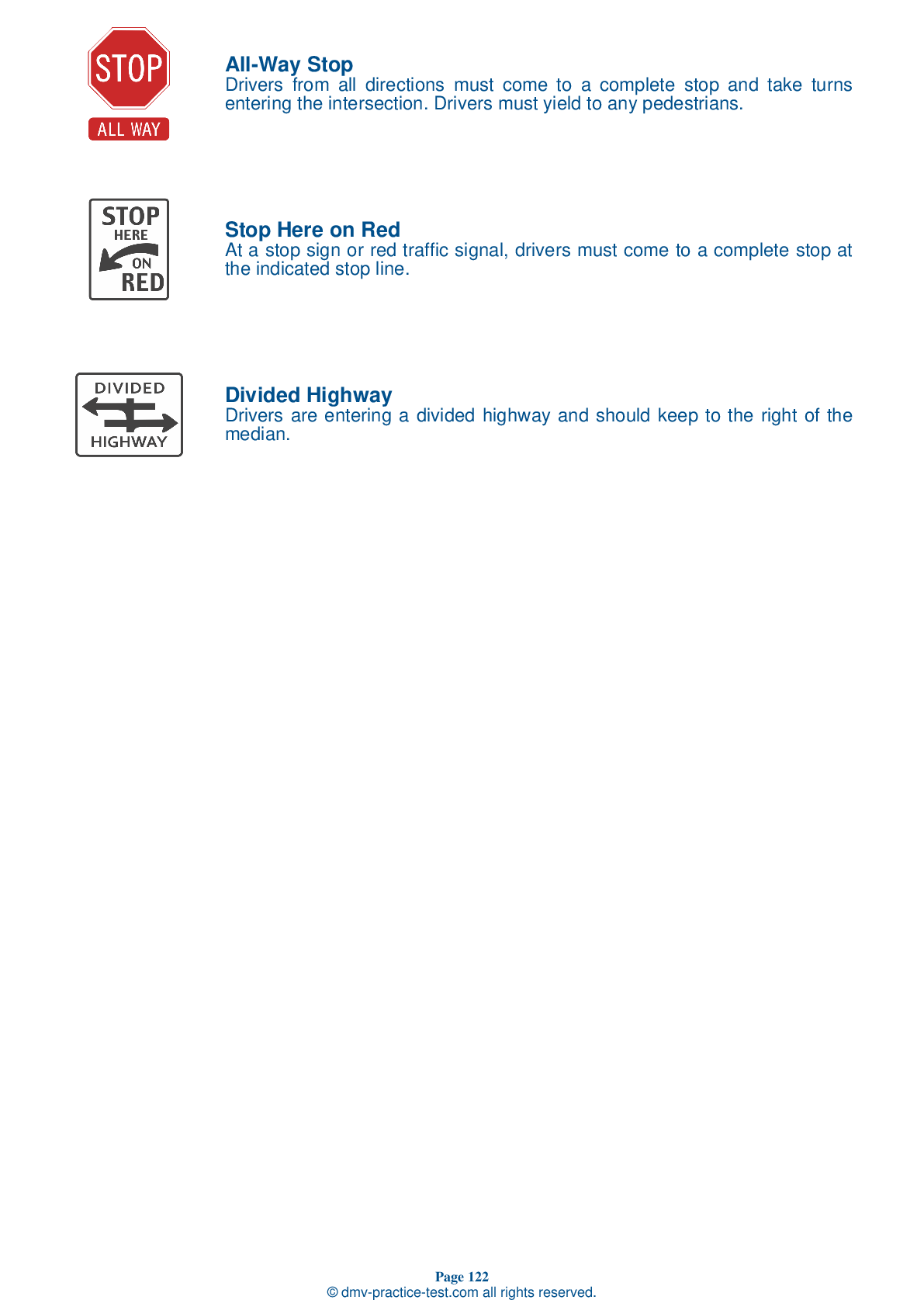Tank Endorsement Test | New Mexico 2025 #2
Train for FREE with our New Mexico tank endorsement practice test online. The official exam test consists of several obligatory parts, with all of them checking your knowledge of different blocks of road rules. If you need to obtain a NM tank license in 2025, practice as much as possible. Free sample tests published on our website will help you check and improve your knowledge and boost your grades. Please bear in mind that DMV requirements for issuing a CDL tank vehicle endorsement may vary from state to state.
1 . Placards must be placed:
Hazardous materials placards must be placed on a vehicle at least three inches away from any other markings and must positioned so that the words or numbers are level and read from left to right.
2 . If the coolant temperature gauge goes above the highest safe temperature, you should:
If the coolant temperature gauge goes above the highest safe temperature, you should stop driving as soon as possible and try to figure out what is wrong. There could be an issue in your vehicle that could lead to engine failure and possibly a fire.
3 . When coupling:
Incorrect coupling and uncoupling of combination vehicles can have extremely dangerous consequences.
4 . Which of the following is not a sign of fatigue?
Potential warning signs of fatigue include difficulty focusing, frequent blinking, or heavy eyelids; yawning repeatedly or rubbing your eyes; daydreaming; wandering or disconnected thoughts; trouble remembering the last few miles you've driven; missing exits or traffic signs; having trouble keeping your head up; drifting from your lane; following too closely; hitting a shoulder rumble strip; or feeling restless and irritable.
5 . On any upgrade, gravity will:
A vehicle will be slowed down by gravity on any uphill grade. You may need to switch to a lower gear to climb a steep grade.
6 . Operating a tank vehicle that is transporting liquid cargo:
Driving a tank vehicle filled with liquid cargo is challenging because tanks have high centers of gravity and because liquid cargo is vulnerable to surge. The movement of liquid cargo in transit can make a vehicle unstable.
7 . An example of required emergency equipment is:
All commercial motor vehicles are required to be equipped with the proper emergency equipment. This may include spare electrical fuses; three red reflective triangles, six fuses, or three liquid burning flares; and at least one properly charged and rated fire extinguisher.
See the exact questions that will be on the 2025 New Mexico DMV exam.
99.2% of people who use the cheat sheet pass the FIRST TIME
Lillian MCcranie explains how our CDL study guide was helpful in passing the exam and recommends it to everyone.
Cameron tells us how he purchased the CDL exam, and found it to be a useful tool which helped him pass the exam and find a job.



